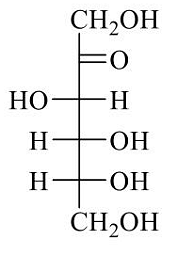The topicity relationship of \(H_a\) and \(H_b\) in X, Y and Z (as drawn in the figure) are, respectively,

The topicity relationship of \(H_a\) and \(H_b\) in X, Y and Z (as drawn in the figure) are, respectively, 
Show Hint
- Diastereotopic, Homotopic and Enantiotopic
- Homotopic, Enantiotopic and Enantiotopic
- Homotopic, Homotopic and Enantiotopic
- Diastereotopic, Enantiotopic and Homotopic
The Correct Option is B
Solution and Explanation
Step 1: Molecule X. The two hydrogens \(H_a\) and \(H_b\) lie on a carbon in a highly symmetric (meso/C\(_2\)) environment bearing identical HO− and −CO2H substituent sets on opposite sides. A \(C_2\) rotation superposes \(H_a\) and \(H_b\); replacing either gives the same molecule \(⇒\) homotopic.
Step 2: Molecule Y. In the bridged/aromatic framework, \(H_a\) and \(H_b\) are related by an improper/mirror operation: replacement of \(H_a\) versus \(H_b\) generates non-superposable mirror-image products, while the parent is achiral. Thus they are enantiotopic.
Step 3: Molecule Z. For the prochiral vinyl \({CH_2}\) adjacent to −Cl, the two vinylic hydrogens are in an enantiotopic relationship (replacing one or the other creates enantiomeric \(E/R_e\) vs \(S_i\) labeled products). Hence enantiotopic.
Step 4: Collecting: \(X\) homotopic, \(Y\) enantiotopic, \(Z\) enantiotopic \(⇒\) option (B).
Top Questions on Relative stereochemistry in compounds having more than one stereogenic centre
- Fischer presentation of D-(-)-fructose is given below.

The correct structure of α-L-(+)-fructofuranose is- GATE CY - 2024
- Organic Chemistry
- Relative stereochemistry in compounds having more than one stereogenic centre
- The major products X and Y in the following reaction sequence are

- GATE CY - 2024
- Organic Chemistry
- Relative stereochemistry in compounds having more than one stereogenic centre
- The correct statement(s) for decalin is (are)
- GATE CY - 2024
- Organic Chemistry
- Relative stereochemistry in compounds having more than one stereogenic centre
The reaction(s) in which inversion of configuration occur(s) is(are)

- GATE CY - 2023
- Organic Chemistry
- Relative stereochemistry in compounds having more than one stereogenic centre
The acetolysis product(s) of the given reaction (solvolysis of the benzylic tosylate in AcOH) is(are)

- GATE CY - 2023
- Organic Chemistry
- Relative stereochemistry in compounds having more than one stereogenic centre
Questions Asked in GATE CY exam
In the given figure, the numbers associated with the rectangle, triangle, and ellipse are 1, 2, and 3, respectively. Which one among the given options is the most appropriate combination of \( P \), \( Q \), and \( R \)?

A regular dodecagon (12-sided regular polygon) is inscribed in a circle of radius \( r \) cm as shown in the figure. The side of the dodecagon is \( d \) cm. All the triangles (numbered 1 to 12 in the figure) are used to form squares of side \( r \) cm, and each numbered triangle is used only once to form a square. The number of squares that can be formed and the number of triangles required to form each square, respectively, are:

The number of patients per shift (X) consulting Dr. Gita in her past 100 shifts is shown in the figure. If the amount she earns is ₹1000(X - 0.2), what is the average amount (in ₹) she has earned per shift in the past 100 shifts?

The Lineweaver-Burk plot for an enzyme obeying the Michaelis-Menten mechanism is given below.

The slope of the line is \(0.36 \times 10^2\) s, and the y-intercept is \(1.20\) mol\(^{-1}\) L s. The value of the Michaelis constant (\(K_M\)) is ________ \( \times 10^{-3} \) mol L\(^{-1}\) (in integer). [Note: \(v\) is the initial rate, and \([S]_0\) is the substrate concentration]
- GATE CY - 2025
- General Chemistry
Consider a Carnot engine with a hot source kept at 500 K. From the hot source, 100 J of energy (heat) is withdrawn at 500 K. The cold sink is kept at 300 K. The efficiency of the Carnot engine is ___________ (rounded off to one decimal place).
- GATE CY - 2025
- General Chemistry